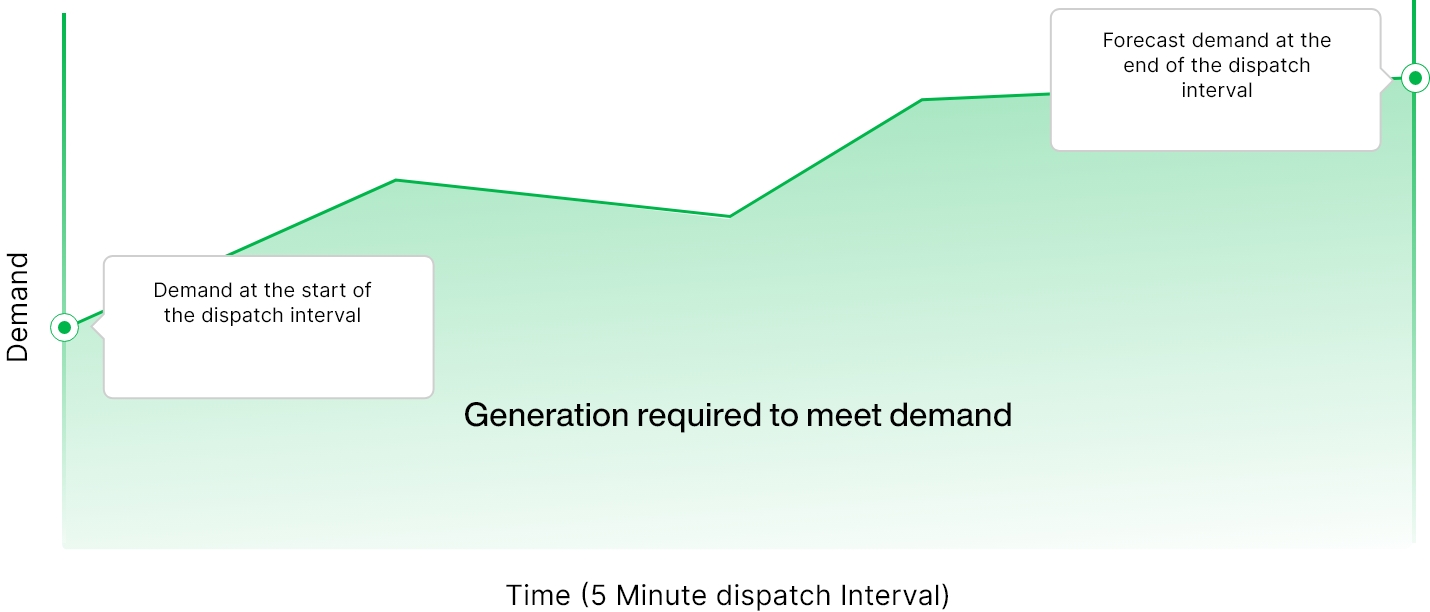Every 5 minutes, AEMO will dispatch generators across the National Electricity Market (NEM) in order to meet demand. To achieve this, AEMO needs to predict what demand will look like 5 minutes in the future.

Currently, AEMO uses the change in demand in the 6 dispatch intervals exactly a week before, and the 5 dispatch intervals immediately preceding the current dispatch interval. The outcome of these calculations is 9 values representing the change in demand over time.

These 9 values are then fed into a machine learning algorithm called a neural network. I’ve drawn the structure of this network below, but all you really need to worry about is the input layer (that takes the 9 values discussed above) and the output layer that predicts the change in demand.

If you’re interested in exactly how this neural network takes these inputs and is able to output a prediction, we’ve implemented it here from scratch in Python along with some example data for how this works.
